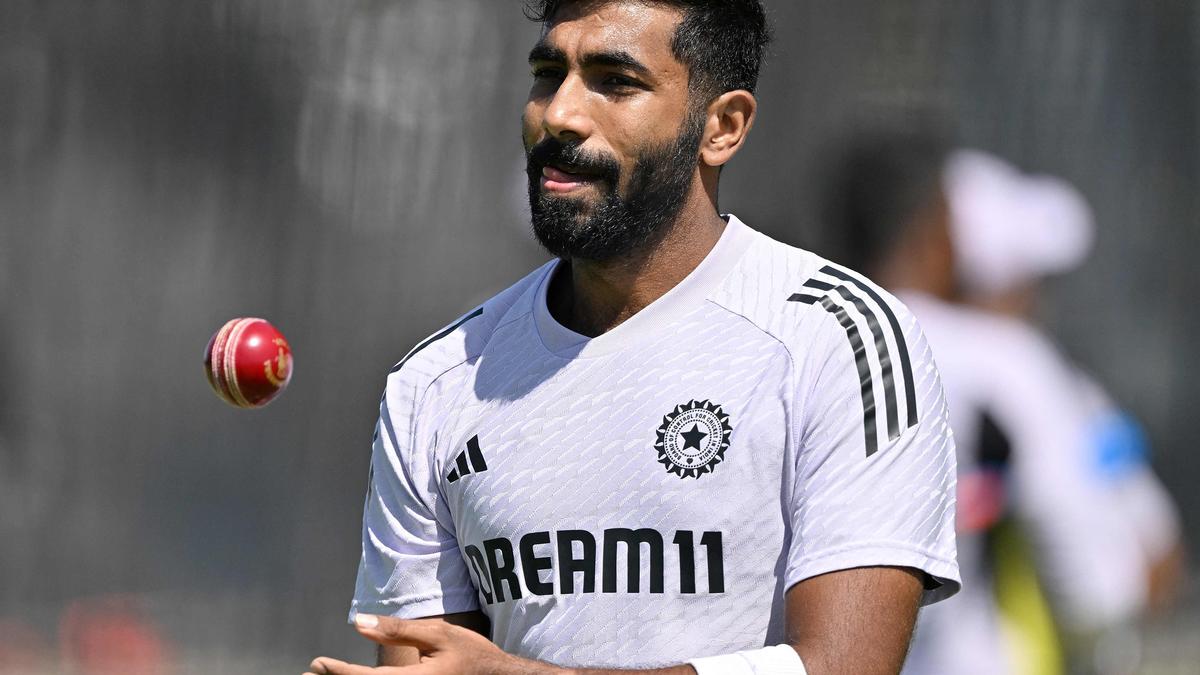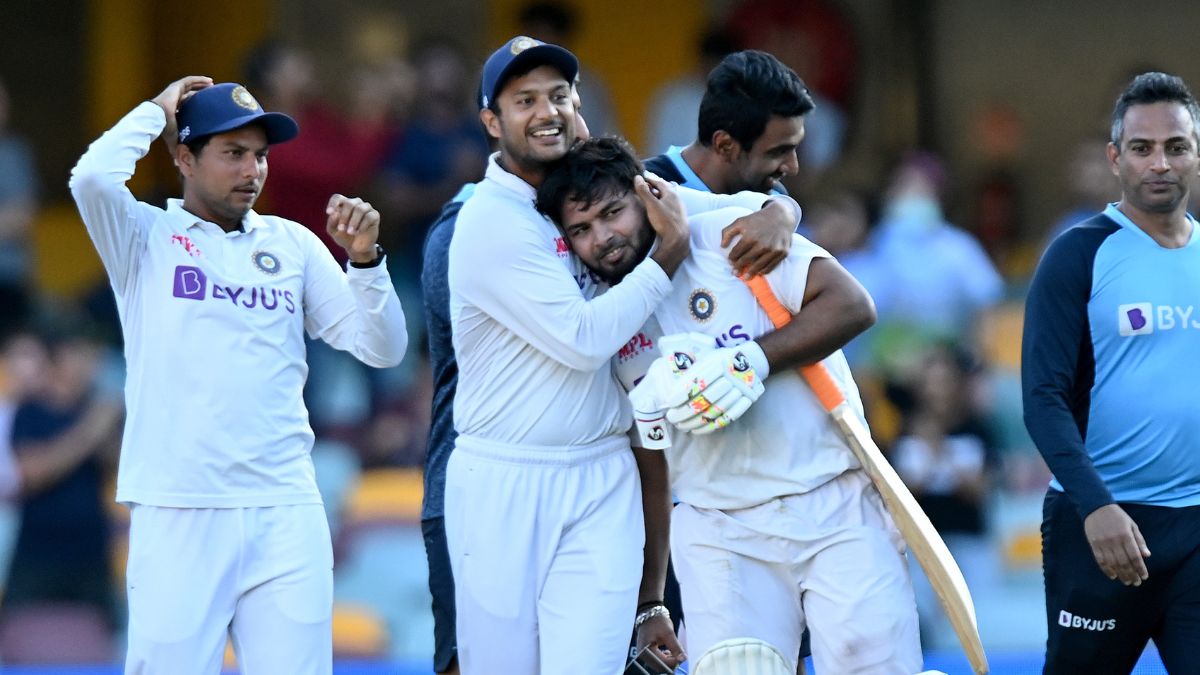Jasprit Bumrah could so easily have been a professor. He is already a professor, many will say, a professor of fast bowling, if an unconventional one at that. But he could have also gone into teaching and made a fabulous job of it.
You only have to listen to him at a press conference if you entertain any doubts. He speaks slowly, thoughtfully and with tremendous clarity, breaking things down to such levels of simpleness that even the slowest can comfortably keep track. Occasionally, he might give off the impression that he is talking down even if that is not the intention, because Jasprit Bumrah is not cut from that cloth.
On Friday morning at the impressive if intimidating Optus Stadium in Perth, Bumrah will walk out for the toss with Pat Cummins to herald the start of the first five-Test series between India and Australia in Australia since 1991-92. It won’t be Bumrah’s debut as Test captain – he performed that role in Birmingham in June 2022 when Rohit Sharma was down with Covid – but it will still be a special moment for someone who has come on so much in such a short time in international cricket.
Jasprit Bumrah of India in bowling action during day two of the 2nd Test Match between India and England at ACA-VDCA Stadium on February 03, 2024 in Visakhapatnam.
| Photo Credit:
Getty Images
Rarity
Fast-bowler-captains are a rarity in Test cricket, for whatever reason. Maybe they shoulder such a demanding workload that the decision-makers feel they are best left to their own devices, to rest and recuperate physically and mentally between overs instead of having to worry about bowling changes and field placements and stuff like that.
It’s not as if there haven’t been long-term skippers who have been pace bowlers – the Pakistan trio of Imran Khan, Wasim Akram and Waqar Younis headlines a list that includes, among others, Kapil Dev, Ian Botham, Bob Willis, Courtney Walsh, Shaun Pollock, Mashrafe Mortaza and, more recently, Tim Southee – but they haven’t been as many as batting-captains, one of the many quirks Test cricket in particular keeps throwing up.
Bumrah’s first tilt at Test captaincy ended in a resounding seven-wicket loss with England chasing down more than 375 in the fourth innings with utter impunity. Despite the result, Bumrah professed to enjoying that responsibility. He will need to be on point every inch of the way, starting from Friday, if India are to make a strong start to their campaign in the absence of Rohit and regular No. 3 Shubman Gill, as well as Bumrah’s pace-partner-in-crime for many years now, Mohammed Shami.
The (capt) against his name is merely an official affirmation of Bumrah’s standing in the Indian cricketing firmament. He has been a leader in his own right almost from the time he made his Test debut in South Africa in 2018, slipping effortlessly not only into the pace spearhead’s capacity but also sharing his inherent wisdom and ever-expanding knowledge around, taking over a mentoring role very early in his career and clearly relishing it.
Bedrock of success
The bedrock of his success has been self-belief, a message he has been quick to pass on to a young bunch of quicks who will be his allies over the next seven weeks. Apart from Mohammed Siraj, who made his Test debut on India’s last Australia tour in 2020-21, there is a great deal of inexperience in the fast-bowling ranks. Akash Deep has five Test caps, Prasidh Krishna two, and Harshit Rana and all-rounder Nitish Kumar Reddy have yet to make their first appearance.
As such, without Shami, the responsibility on Bumrah to keep delivering the wickets that will keep India in the contest has increased manifold though if there is one thing that’s been evident for the last nine years since his India debut, there is nothing Bumrah thrives in more than responsibility.
It’s no surprise that batting legends past and present have installed him as the most difficult pacer to negotiate in world cricket currently. Bumrah is unorthodox in so many ways that his unorthodoxy is one of his primary allies.
Much has been said of his braced left knee and his hyperextended right elbow that allows him to release the ball a little later than anyone else, which messes up the batter’s perception of length. But Bumrah isn’t only about the absence of classicism. He is a class act, any which way you look at it, blessed with the felicity to use the new ball and old with equally devastating impact and having an outstanding cricket brain to boot.
It’s his intelligence, his ability to read and sum up situations rapidly and to set batters up, that has thrust him to the top of the pace bowling pile. With little perceptible change in action, he can make the ball do different things from nearly the same release. His control is exemplary and he seldom has off-days, which is a great luxury for any captain. And when he himself is the captain, well, beware.
One of the dangers of being a bowler-captain is the possibility of either over-bowling or under-bowling oneself, goes conventional wisdom. Bumrah being Bumrah, he has an entirely different take on this issue.
“I can manage myself the best when I’m the captain, because I know when I’m fresh, when I know I have to push myself, and I know when I have to take extra responsibility,” he said on Test eve. “There are different challenges, yes, but there are advantages as well and I look at the advantages. I look at the positives more than the negatives.”
Without harping too much on the theme, Bumrah knows he is merely filling in for Rohit, who should return from paternity leave next week. But another of the Gujarat quick’s great strengths has been his ability to live in the present, to learn from the past but not allow it weigh him down, to leave the baggage of past failures and disappointments behind, and to start from scratch every time he sets foot on the cricket field.
Master
Now on his third Test tour of Australia – it was here too that he made his ODI debut in early 2016 – Bumrah knows the conditions here as well as any overseas fast bowler can be expected to. He is a master at finding, and then hitting, the right lengths on any surface and in Australia, length is the key, especially for those – bowlers and batters – coming from the subcontinent.
Because there is significant bounce, the propensity is to bang the ball in shorter and try and unsettle the batter and while that might look pretty for a while, it certainly doesn’t come with the guarantee of success.
THE GIST
Bumrah’s first tilt at Test captaincy ended in a resounding seven-wicket loss with England chasing down more than 375 in the fourth innings. Despite the result, Bumrah professed to enjoying that responsibility
The pacer has been a leader in his own right almost from the time he made his Test debut in South Africa in 2018
One of the dangers of being a bowler-captain is the possibility of either over-bowling or under-bowling oneself, goes conventional wisdom
Bumrah is unorthodox in so many ways that his unorthodoxy is one of his primary allies
For batters coming from tracks with less bounce, the inclination to play deliveries that they could so easily leave on bounce is understandable, which is why the need for the discipline, particularly when the Kookaburra is hard and new, to resist the temptation of flirting with balls in the corridor that could be left alone.
The Kookaburra can be a batter’s ally when it gets a little old and soft because it seldom deviates from the seam but Bumrah knows how to make even the most unresponsive cherry do his bidding. He will keep probing away, looking for and then cashing in on the slightest hint of weakness or uncertainty, but what makes him lethal is his immense control even when he is trying something different.
Greatest challenge
This is arguably Bumrah’s greatest challenge in Test cricket – even temporarily setting aside the fact that he is the stand-in skipper – against a talented but prone-to-fragility Australian batting line-up. There is no David Warner to take the bowling on up front, Usman Khawaja is more an accumulator rather than a destroyer and debutant opener Nathan McSweeney will inevitably feel the pressure, which means Bumrah will get a little more leeway to settle into his rhythm.
Once he finds his bearings, he is capable of immeasurable damage if there is even the slightest assistance in the air or off the deck. And even if there is nothing in the surface, Bumrah can just do batters in the air. Like an ashen-faced Ollie Pope will testify.
Australia will believe the longer they can see Bumrah off and keep him wicketless, not just in Perth but elsewhere too when Rohit returns, the greater the chances of him succumbing to frustration in an effort to overreach and try too hard.
There is a sense of unfinished business within the Australian ranks; several in this Cummins-led outfit haven’t been part of a Border-Gavaskar Trophy winning team even though Australia are the defending champions of both the World Test Championship and the 50-over World Cup. In the past, they have often targeted the head of the snake – the euphemism for the player in the opposition ranks most likely to influence the outcome of the contest – and it won’t be any different with Bumrah, which is a great tribute to the 30-year-old, given Australia’s unending obsession with Virat Kohli.
How smartly Bumrah responds to those attacks will make for interesting viewing because Bumrah loves the scent of a battle as much as he does making batters look sheepish with toe-crushing yorkers, beautifully disguised slower ones, radar-directed in-duckers and the late away-swinger that rushes in for a romantic tryst with the outside edge.
In a fortnight’s time, exactly on the day the pink-ball Test starts in Adelaide (December 6), Bumrah will celebrate his 31st birthday. Now, how wonderful it would be if he could give himself an early birthday present by fusing incisive spells with decisive leadership for an optimal performance at the Optus.
Published – November 21, 2024 09:59 pm IST





